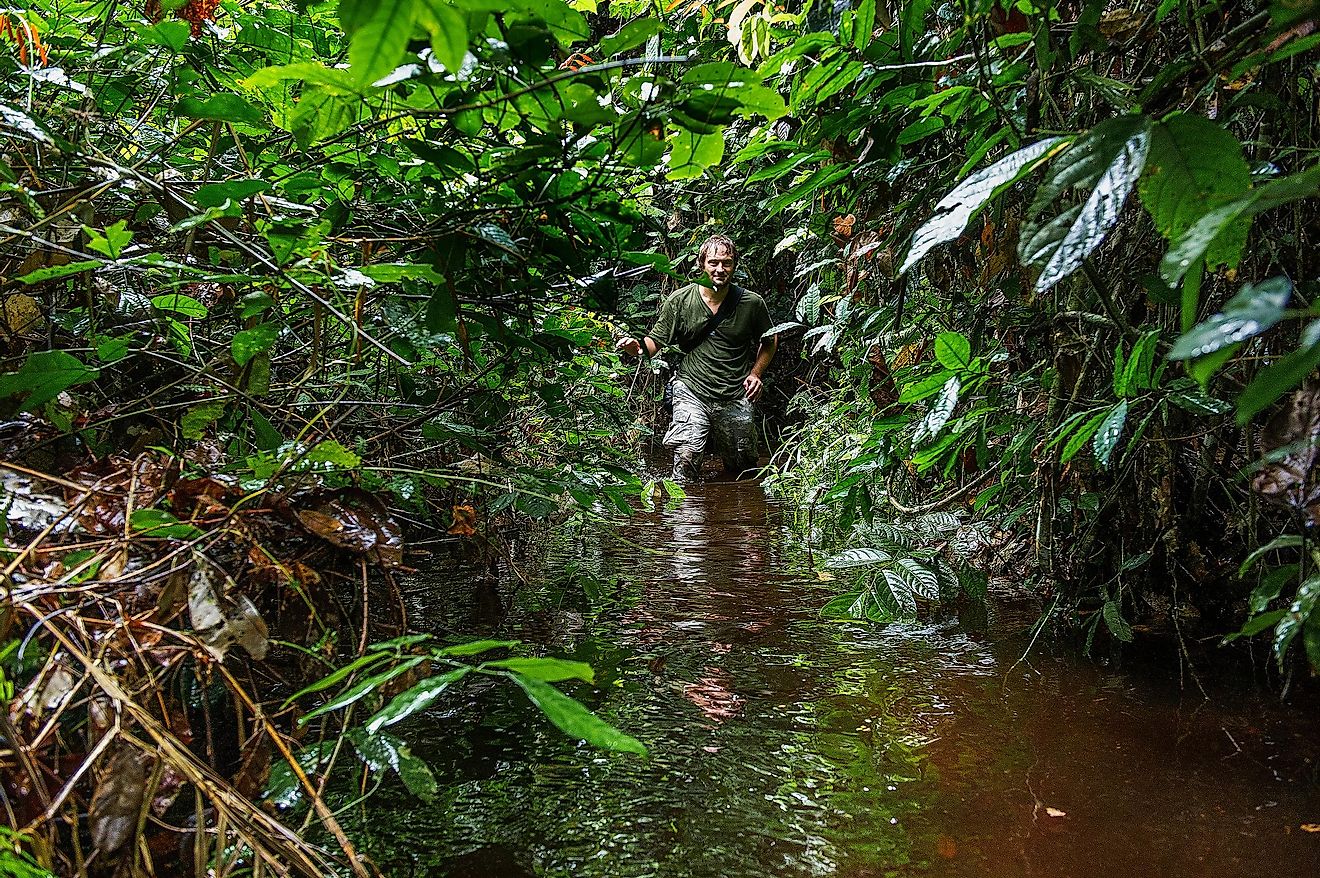Ecological Regions Of The Republic Of The Congo (Congo-Brazzaville)

Congo-Brazzaville is located in central Africa with Brazzaville being its biggest and capital city. The official language is French, while Kituba and Lingala languages are recognized regional languages. Kongo (48%) and Sangha (20%) are the largest ethnic groups. Congo is located along the equator and experiences a consistent climate all year round. The average annual rainfall is 2,000 mm, and the average temperature is twenty-four degrees. Most parts of the republic are forested with a high population of western lowland gorillas. The main ecological regions in the
Atlantic Equatorial Coastal Forests
It covers an area of 73,200 square miles along the Atlantic coast. The region receives very high rainfall throughout the year. The forest is inhabited by big mammals such as western gorillas, buffaloes, elephants, and chimpanzees. Other primates include the black colobus monkeys and the mandrills. The animals are becoming endangered due to increased hunting for meat. The elephants are also hunted for ivory. Logging is a threat to the trees of this region. However, conservation efforts are being directed at conserving the forest. The government has designated a vast area of the forest as a national park.
Western Congolian Swamp Forests
It is one of the largest freshwater swamp forests in the world, and it has a high canopy and dense undergrowth. The forest is always flooded and muddy. The most common trees are Raphia palm, Garcinia, and Manilkara. This region is home to an endangered species of gorilla known as the western lowland gorilla and the African elephant. The forest is one of the few in the world with almost no human activities since it is virtually impossible for one to penetrate into the woods. It is still intact and not threatened at all.
Northern Congolian Forest-Savannah Mosaic
The savanna mosaic is a transitory ecotone between moist forests, dry savannas, and open woodlands. It is mostly made up drier forests and open grasslands. There are several distinct forest-savanna mosaic ecoregions. These include the Guinean forest and Western Congolian Forest among others. In this article, we will only discuss the Northern Congolian Forest. It lies between the tropical Congolian forest to the south and the Sudanian savanna to the north.
Upper Congo Rapids
They are also known as the Livingstone Falls, and consist of a series of waterfalls of up to 900 feet in height along a 220-mile-long stretch of the Congo River. These falls make the river navigable, and a railway line was constructed to bypass them. A big hydroelectric plant called Grand Inga project is set to start. However, environmentalists have raised concerns regarding the effects of the dam to the environment and also adversely affect the level of fish population in the river. Experts have however asserted that the design could be made an environmental friendly by using “the run of the river” concept. For example, they can utilize larger flow volume with a smaller head to minimize the size of the reservoir.
Northwestern Congolian Lowland Forests
It is part of the Congo Basin rainforest. It has the highest number of primates in the world. Chimpanzees and guerrillas are the most common primates in this region. Other animals found here include elephants, buffaloes, butterflies, amphibians, birds, and reptiles. There are more than 6, 000 species of vascular plants in this region. This ecological region covers an area of 107,263,998 acres. Apart from Congo Brazzaville, the ecological region is found across countries such as Cameroon, Central Africa Republic, and Gabon. Most people living in this area practice agriculture for both subsistence and commercial. Plants found in abundance are fruits, oil-bearing crops, and root tubers. Pastoralism is also highly practiced. The climate can be described warm and humid, and the terrain is relatively flat, situated on a plateau. Red and yellow tropical soils (known as ferralsols and Gleysol) soil are found in the region.
Ecological Regions Of The Republic Of The Congo (Congo-Brazzaville)
| Ecological Regions of the Republic of the Congo (Congo-Brazzaville) | Biome |
| Atlantic Equatorial coastal forests | Tropical and Subtropical Moist Broadleaf Forests |
| Central West Coastal Equatorial | West Coastal Equatorial Freshwater |
| Gulf of Guinea South | Marine |
| Lower Congo Rapids | Congo Freshwater |
| Northwestern Congolian lowland forests | Tropical and Subtropical Moist Broadleaf Forests |
| Sangha | Congo Freshwater |
| Southern West Coastal Equatorial | West Coastal Equatorial Freshwater |
| Oubangi Sudanic Congo | Congo Freshwater |
| Upper Congo Rapids | Congo Freshwater |
| Western Congolian forest-savanna mosaic | Tropical and Subtropical Grasslands, Savannas, and Shrublands |
| Western Congolian swamp forests | Tropical and Subtropical Moist Broadleaf Forests |







